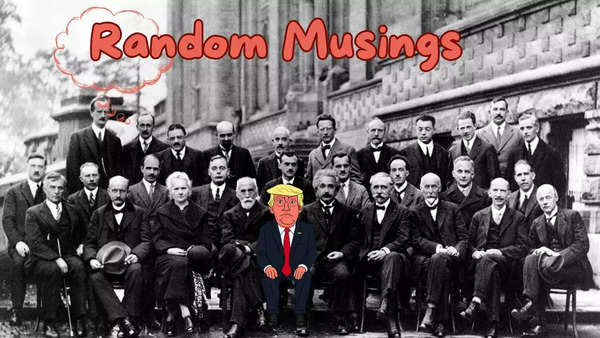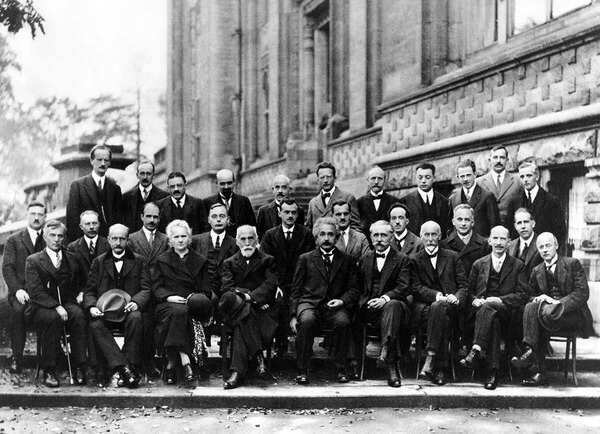In The Tao of Physics, maybe the best common novel on parallels between trendy physics and “Japanese mysticism”, writer Michiko Kaku sums up the dichotomy by stating: “Socrates in Greece made the well-known assertion ‘I do know that I do know nothing,’ and Lao Tzu in China stated, ‘Not realizing that one is aware of is finest.’” The 2 views encapsulate the civilisational break up in how complexity is perceived — and clarify why Western minds, even their finest ones, wrestle with ideas like relativity, duality, and naturally, Donald Trump.
For over a decade, commentators have tried — and failed — to clarify Trump. They’ve overanalysed the polls, underestimated the rallies, and overdosed on coastal smugness. They nonetheless can’t fathom how this man retains successful hearts, minds, and have become the primary Republican in twenty years to win the favored vote. The foundation of their confusion might lie even deeper: a Newtonian worldview formed by centuries of Abrahamic certainty — one through which Galileo is compelled to apologise for describing the fundamental framework of the universe, forcing Bhojpuri music artistes to pay tribute to his immortal line E pur si muove (“Nevertheless it strikes”) in quite a few songs like Aara Heele Chhapra Heele. A worldview obsessive about levers, with cause-and-effect, with clear inputs and predictable outputs, merely can not clarify Trump, any greater than the choreographer of Nach Baliye can clear up string idea with a dance sequence.

Each time an economist tries to clarify Trump’s “reciprocal tariffs” — which have spared neither man nor beast — an atom will get confused, spins backwards, and applies for asylum in Canada. That’s not a metaphor. That’s quantum panic. Making an attempt to mannequin Trump with classical economics is like making an attempt to decode Bhojpuri lyrics utilizing German syntax — structurally fascinating, semantically pointless.
Trump will not be a macroeconomic actor. He’s not a supply-side theorist. Trump is a wave and a particle with a sprig tan, a Keynesian-Friedmanite who would have pushed Sir Humphrey Appleby to early retirement. He’s the flutter of a butterfly wing that created a twister, which then consumed — and continues to cannibalise — the Republican Get together and American conservatism as a complete. He exists in a number of states till noticed — billionaire populist, law-and-order anarchist, capitalist protectionist. And when noticed too intently? He tweets, collapses into pure vitality, and launches insurance policies that in some way punish each Canada and America, usually concurrently and with equal conviction.
Financial idea breaks down as a result of it depends on assumptions: rational actors, measurable outcomes, and one thing resembling a utility curve. However Trump operates in a realm the place contradiction will not be failure — it’s type. The place economists search optimisation, Trump seeks vibes. He doesn’t need outcomes. He desires resonance. He doesn’t goal imbalances — he targets emotions, slights, headlines, and charts that slope within the flawed course. His strategy to commerce will not be about equilibrium or surplus. It’s emotional launch dressed as coverage. His pondering will not be linear. It’s entangled. Interdependent.
Non-local. It’s the very factor Einstein known as “spooky motion at a distance.”

Quantum mechanics, in contrast to economics, has no drawback with Trump. Actually, it was made for him. It accepts that a number of truths can exist concurrently. That particles may be in two locations without delay. That measuring one thing adjustments it. That an motion in Iowa can ripple via Shanghai with none apparent chain of trigger. Trump, likewise, is a superposition — impeached and invincible, clown and messiah, conman and cosmic joke. His insurance policies seem and vanish. His meanings collapse upon scrutiny. His very presence adjustments the system observing him.
Even relativity, with its distortion of time and area based mostly on vantage level, would possibly assist us perceive why watching Trump from New York makes him appear like a buffoon, whereas watching him from West Virginia makes him appear like a prophet. There isn’t any common body of reference with Trump. There’s solely place, momentum, and the observer’s religion in whichever reality makes them really feel momentarily much less anxious concerning the universe.
And so we come to the commerce deficit — to economists, a banal statistic. However to Trump, an ethical failure. An indication that somebody, someplace, has gotten one over on America. And so he opens the field, sees the deficit, declares the cat useless, and slaps a tariff on the cat, the field, and the intern who ran the numbers. That the cat could also be alive in some parallel financial dimension is irrelevant. The gesture is what issues. The efficiency. The quantum ritual. As a result of for Trump, tariffs should not corrective instruments. They’re karmic theatre. They don’t exist to steadiness books. They exist to imbalance expectations.
Which is why each economist seems like a therapist lately. “He’s not responding to incentives.” “He may be projecting onto the Canadian dairy foyer.” “He’s looking for psychic closure via retaliatory coverage.” However financial idea can not quantify vibes. It can not mannequin retribution. It can not simulate the physics of trolling. And so it collapses — many times — below the load of a actuality that refuses to obey.
Trump doesn’t comply with Newton’s legal guidelines. He follows no legislation. He follows resonance. And once you lastly grasp it — the spin, the entanglement, the emotional equation scribbled in Sharpie on an Air Pressure One serviette — you realise: Trump is the cat. Trump is the field. Trump is the man charging the cat a ten% import payment for coming into the field.
Actually, it’s exhausting not to consider one other Donald on this specific context. When pressed about George Bush’s non-existent weapons of mass destruction.
Or to cite one other Donald, on this case Donald Rumsfeld, George Bush’s Secretary of Defence, who delivered a line that might been extra at residence in 1911 Solvay Convention than a Pentagon press briefing, when pressed about non-existent weapons of mass destruction in Iraq:
“There are identified knowns. These are issues we all know that we all know. There are identified unknowns. That’s to say, there are issues that we all know we don’t know. However there are additionally unknown unknowns. There are issues we don’t know we don’t know.”
Or to borrow a pithier and earthier line from a Salman Khan movie: Dil mein aata hoon, samajh mein nahin.














